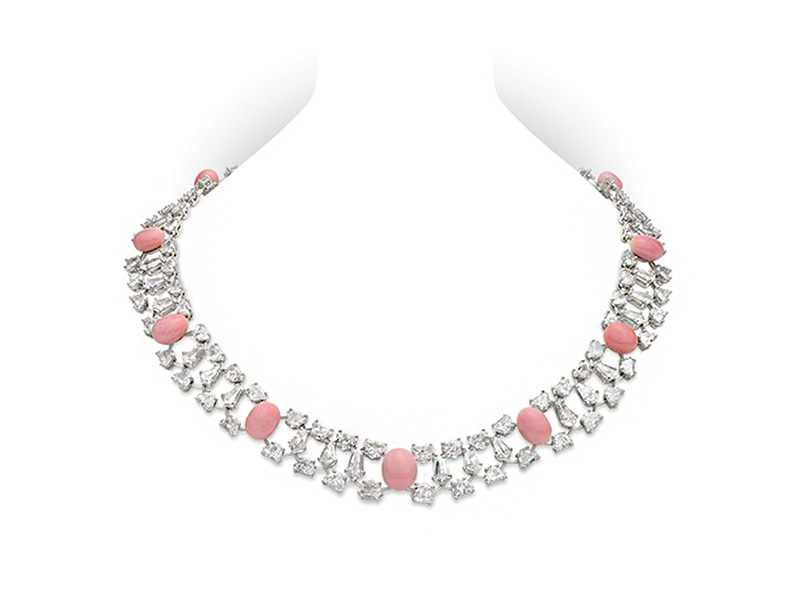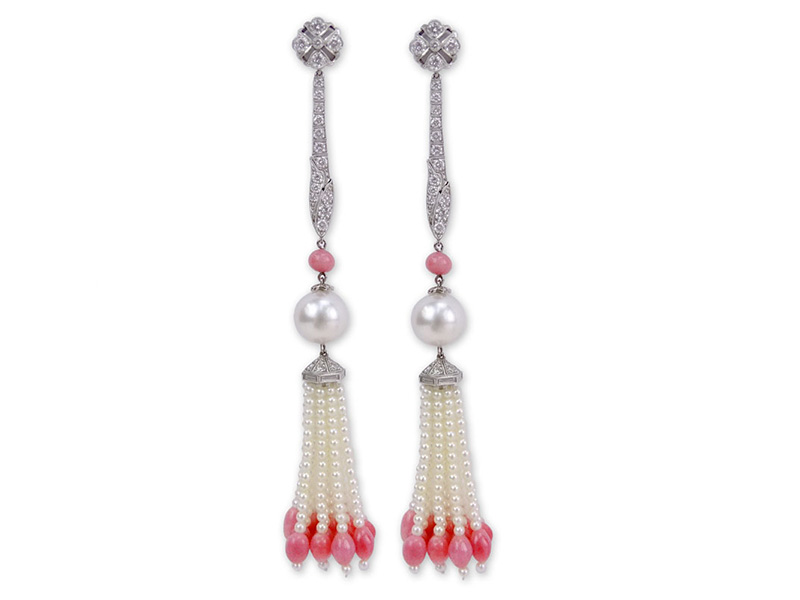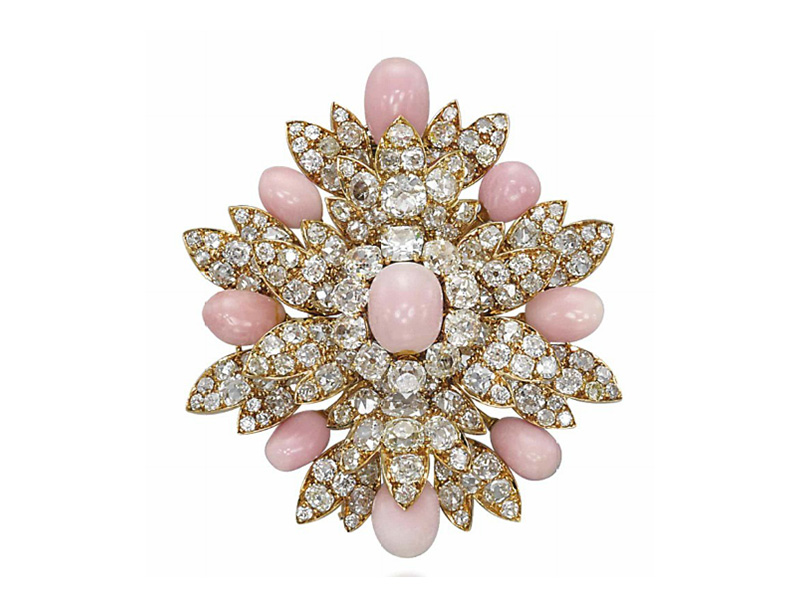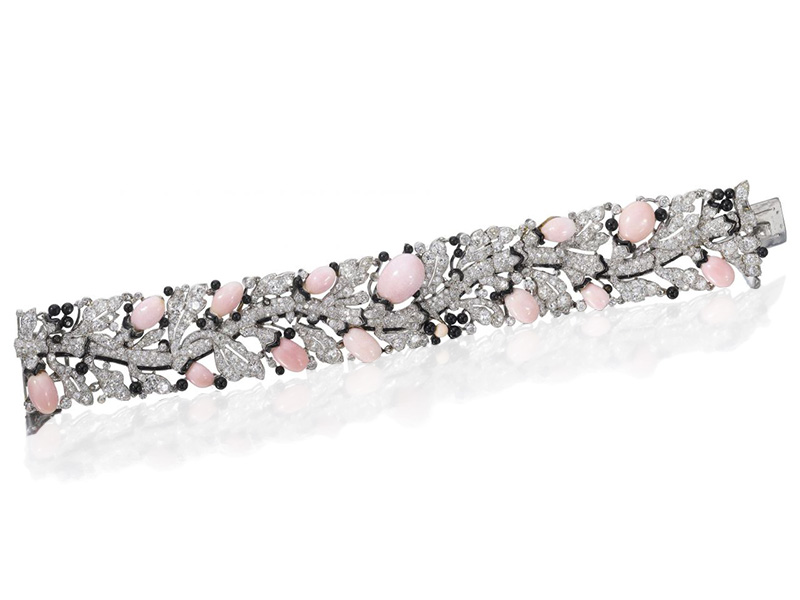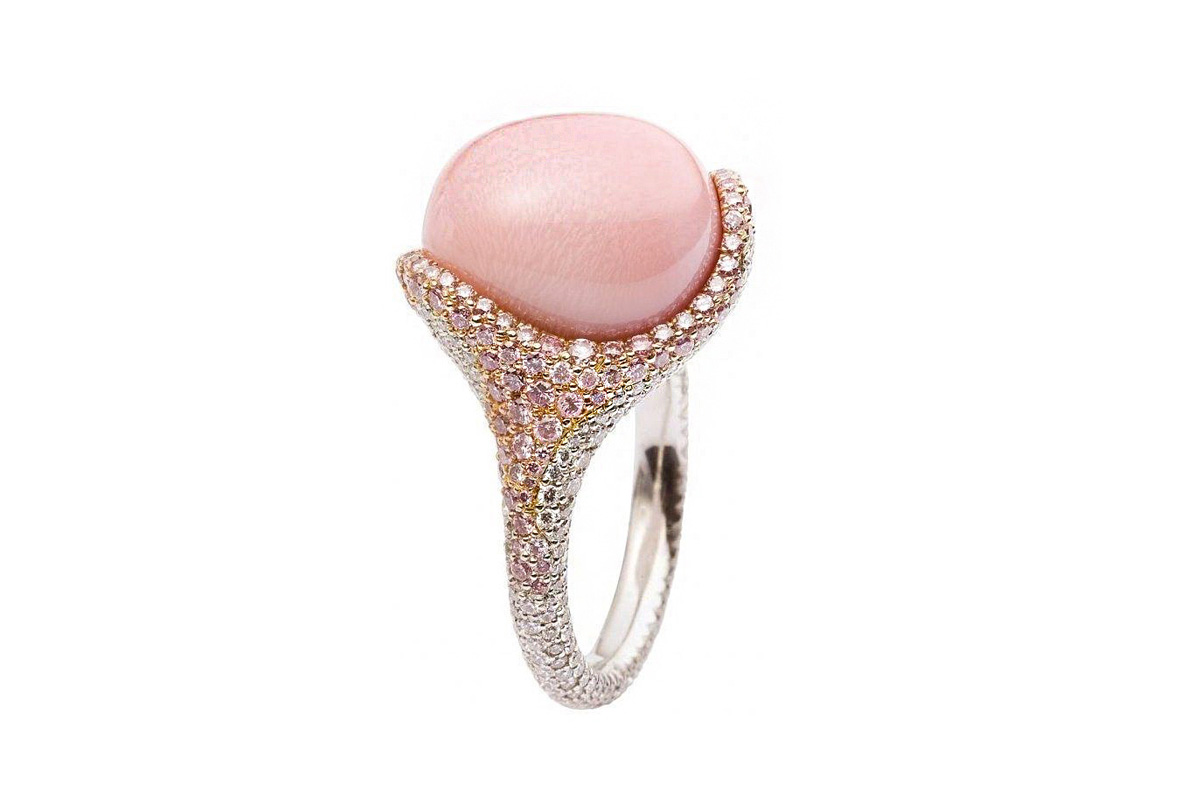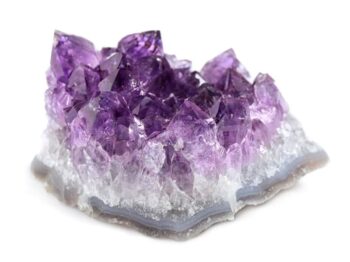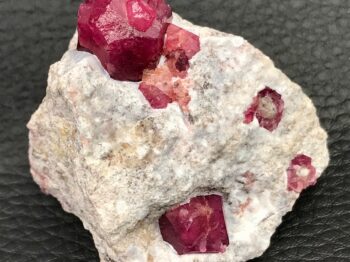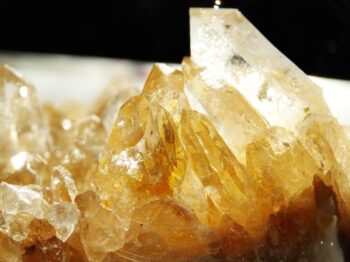Known for their beautiful coral like colors, the Conch pearl has been used in jewelry ever since the Victorian Era. Classic, just like traditional white pearls, Conch pearls bring gorgeous colorings to their jewelry pieces.
For those looking for the classics of a pearl, but with a little more fun and modern twist, look no further than the Conch pearl. These natural pearls have a gorgeous pastel pink, coral like color that has been prized for many years. Technically, they are not a traditional pearl considering that they are deprived of the shimmering mother of pearl effect. This means that they are not made of nacre, which is the substance that gives pearls their iridescent luster. The conch pearls are produced by the Queen conch mollusk: a large, edible sea snail housed in a spiral shaped shell!
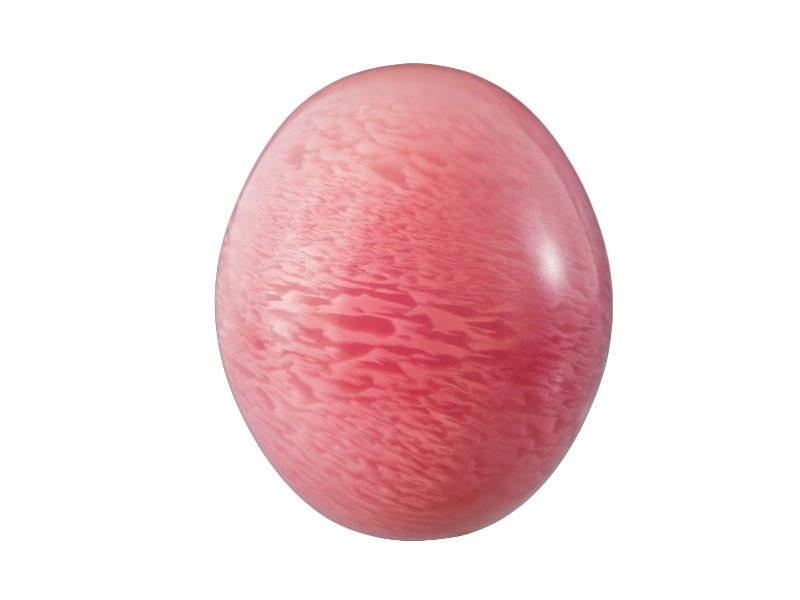
Conch pearls are heavier than a traditional oyster pearl, and therefore are weight by carats instead of millimeters. These pearls are formed when a particle of sand or a broken piece of shell is gets into a Queen conch by mistake. A calcareous concentration is then formed around this irritant, eventually forming the Conch pearl. These Queen conchs live in warm tropical waters from the Caribbean all the way up to Bermuda. The Caribbean islands as well as the United States, eat the conch meat in salads or fritters. When fishermen are cutting the meat out of the shell, this is when a Conch pearl can be discovered. Overfishing has caused a decline in the number of new Conch pearls, with some places now banning the fishing of Queen conchs.
Conch pearls are more rare than traditional pearls, about 1 in 10,000 compared to 1 in 10 with a traditional pearl, partly due to the shell that they are formed in. The Queen conch shell has just one opening, while other pearls have 2 sides to a shell to form in.
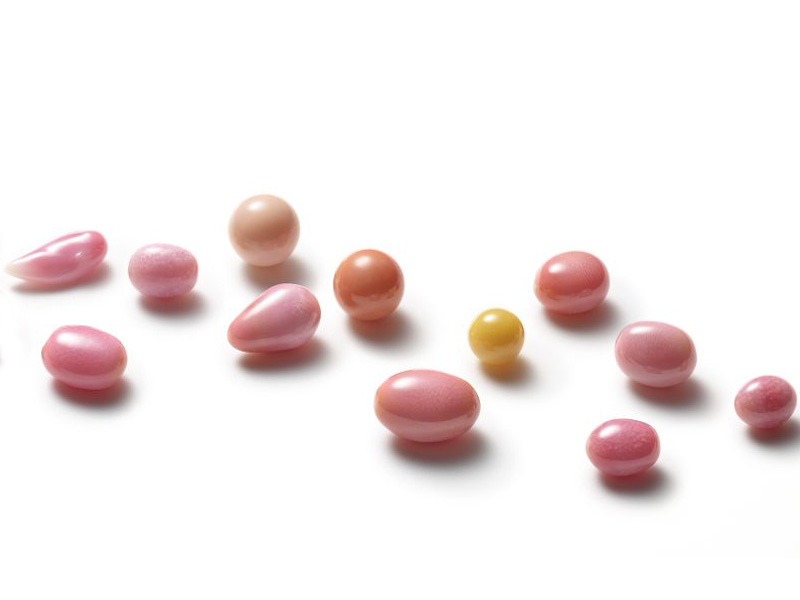
As mentioned, the Conch pearl comes in a muted coral color, most often in an oval shape. White and brownish colors can also be found, though pink and salmon hues are the most common and popular. The most prized Conch pearls are ones that showcase a chatoyancy that resembles a flame like pattern on the pearl. This pattern should be visible to the naked eye and is part of what determines the value of the Conch pearl. This structure is formed by layers of calcium within the Queen conch, which form in concentric layers right below the surface of the pearl.
These gorgeous stones have been used in jewelry as far back as the Victorian era, mostly for the carving of cameos. You’ll see the use of the whole Conch pearls in Art Nouveau and Art Deco pieces. After much popularity during the Art Deco era, there was a lull until the late 70s and 1980s. The return in popularity is partially due to Sue Hendrickson, an American professional diver, paleontologist and marine archaeologist. She started purchasing Conch pearls from fishermen in the Caribbean, amassing a collection of high quality pearls. One of her competitors sold some of their own personal collection of Conch pearls to Harry Winston, starting the trend of Conch pearls being used in jewelry again. We’ve seen Conch pearls in Mikimoto, Tiffany & Co, Harry Winston, Cartier designs and more recently, David Morris.
